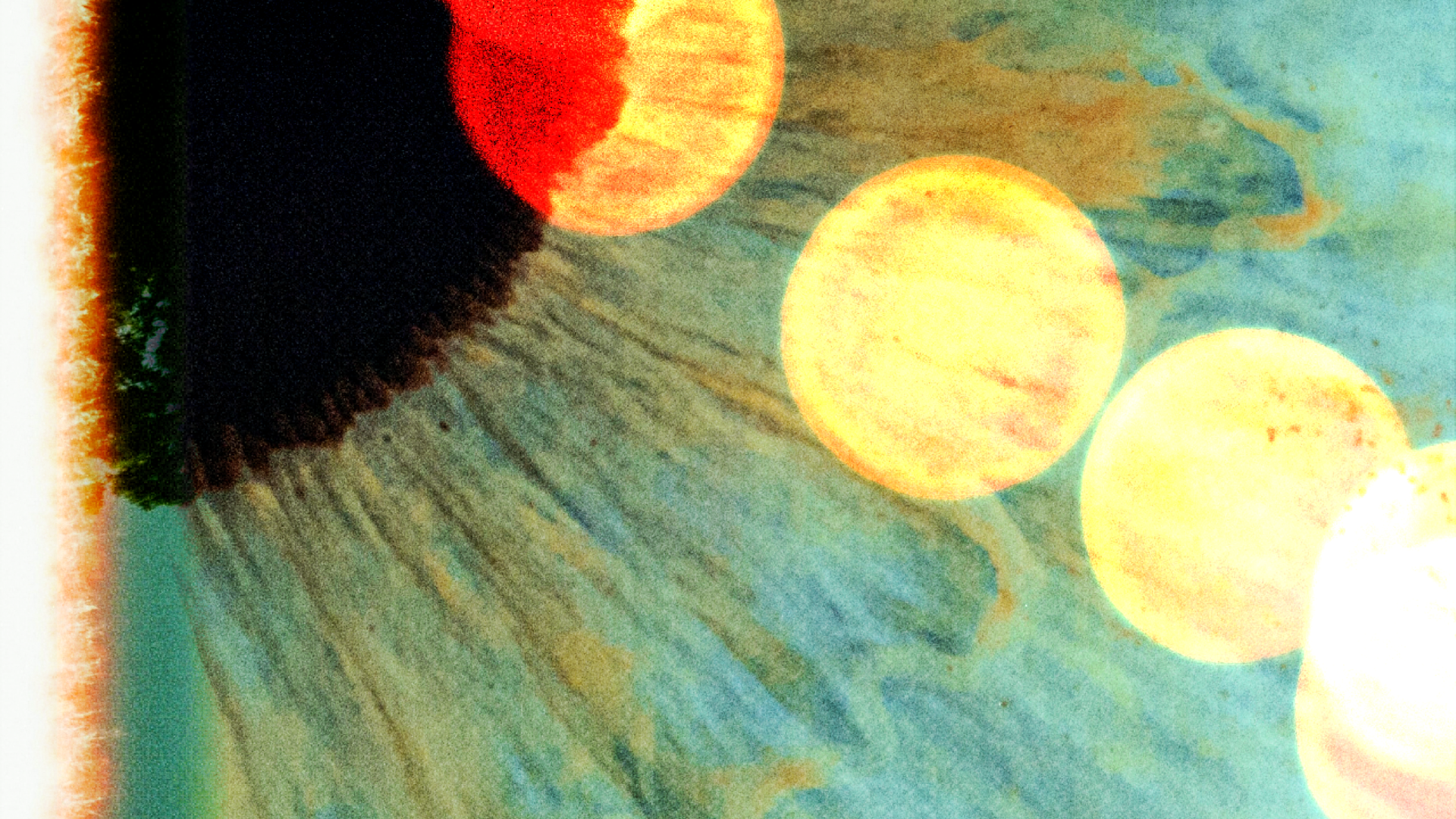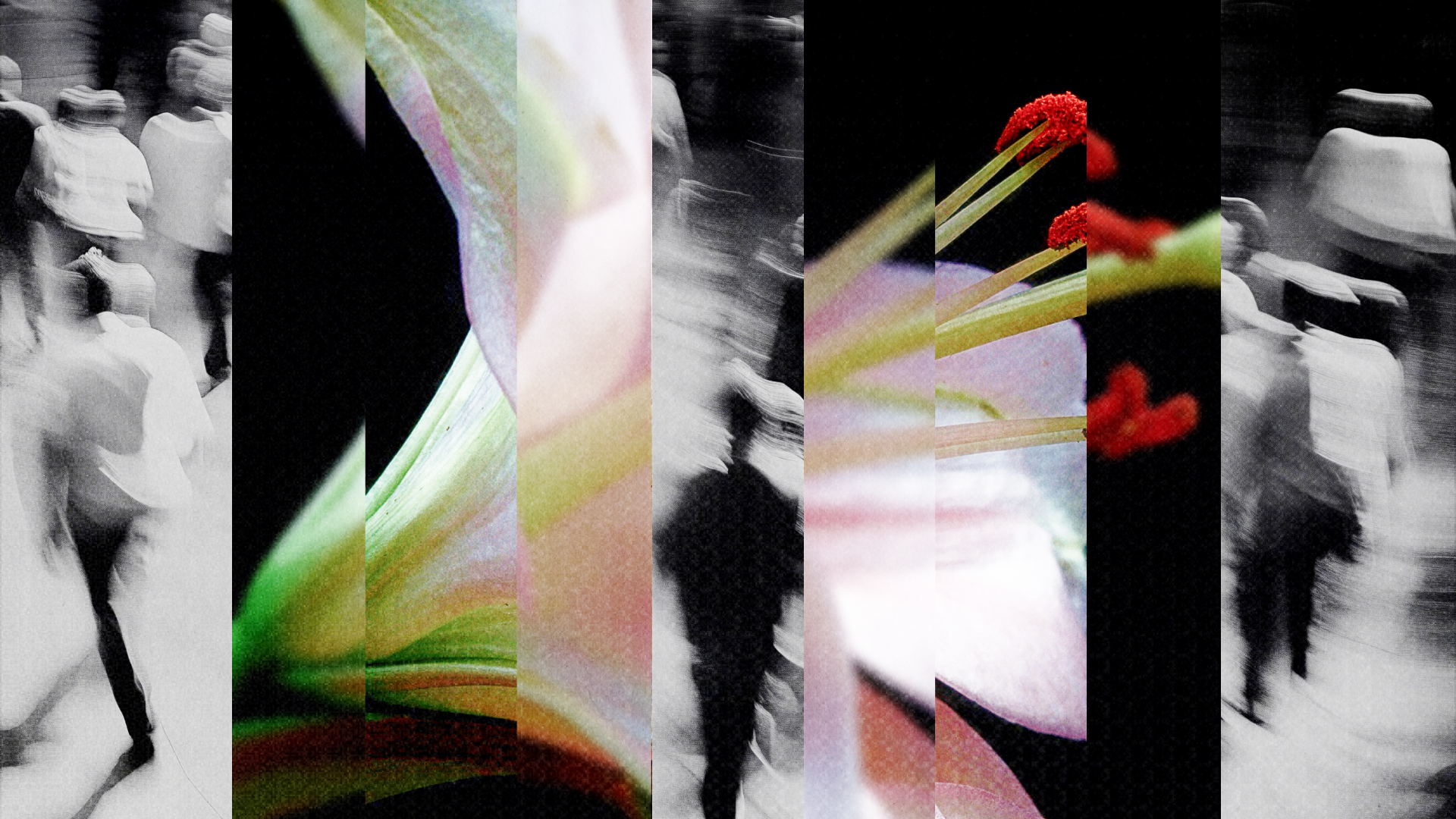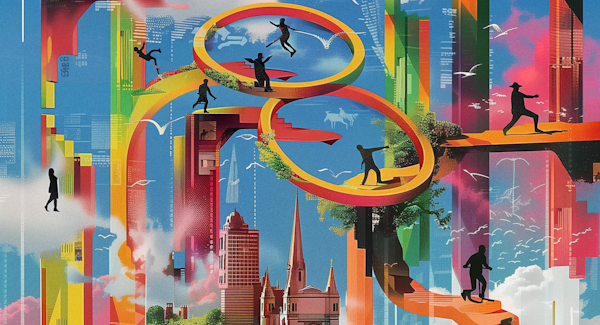The Weird, Eccentric Power of Periphery

Can you hear the soul of a city?
This is the question at the heart of German-Turkish filmmaker Fatih Akin’s 2005 movie Crossing the Bridge in which multi-instrumentalist and producer Alexander Hacke, a member of legendary German avantgarde band Einstürzende Neubauten, travels to Istanbul to explore its rich musical landscape. He arrives in the city with little more than his recording gear and leaves with his heart full. “I wasn’t able to decipher the mystery of this city, but I fell in love with its music,” he says.
Over several weeks, he follows street musicians and famous singers into hammams, hotel rooms, and private apartments. We watch him improvise with the psychedelic band Baba Zula on a boat on the Bosphorus, jam with rapper Ceza in his recording studio, and provide accompaniment for singer Sezen Aksu inside a glamorous downtown suite. It all makes for an eclectic soundtrack that is steeped in regional styles while leaning on Western pop culture with a mix of admiration and ambivalence.
Yet if you take your eyes and ears off the immediate scene, if you watch and listen carefully into the exuberance of Istanbul’s music as it is captured by Hacke, you will find a melancholy that stems from constantly having to find your own way, like a child of divorced parents that has countless siblings. Through Hacke’s musical excavations Akin exposes the inherent duality of Istanbul’s—and Turkey’s—soul: a constant tension between tradition and secularism, East and West, Asia and Europe. “If you want to be European, you’re definitely not European,” one of the musicians says.
Crossing the Bridge was shot when Turkey was still vying for membership in the European Union. It’s an era that seems almost nostalgic now. Throughout the past century, Turkey’s politics have beat back and forth like an arrhythmic metronome, sometimes frantically, even violently. Istanbul is the bridge crossing it all, but it is one that is constantly shaking. Enter at your own peril.

Listening with Your Eyes, Seeing With Your Ears
Last week, I attended an intimate salon that was part of the Başka Felsefe (Another Philosophy) event series, whose mandate is to explore how big philosophical questions can apply to everyday places and life. Thirty guests squeezed into a crowded pub in Kadiköy, a bustling neighborhood in Istanbul’s Asian side, to hear a discussion between philosopher Utku Özmakas and psychiatrist Cengiz Arca, hosted by literary agent and curator Eda Çaça. The conversation, which considered the complicated relationship between happiness and unhappiness, was filmed by Iranian filmmaker Ali Farkhonde (who co-produced the Netflix series Ethos). I felt like an extra in an arthouse movie. Trying to follow the conversation, I caught the occasional word or name—Adorno, positive psychology, Tolstoy—but since I don’t speak Turkish, the remaining 99.99% remained a mystery to me.
And yet, I felt as though I heard and saw so much. Without the ability to understand what was being said, I focused on observing the body language of the speakers and guests. I noted their inquisitive, skeptical, and surprised expressions, the coyness of those who found the setting too intimate, the invisible connections made visible through gestures. I noticed when someone was really into the conversation and when they tuned out. I noticed when the attention rose and dropped. I noticed when a speaker lost the room, even just for a few seconds, and when they captivated it so much that not even the chatter from the bar downstairs could be distracting. I heard the clinking of glasses, the screeching of a chair, the sound of the city outside, the crescendo and decrescendo of intellect and emotion. I even heard when someone didn’t understand what was being talked about.
Paradoxically, because I didn’t understand, I was able to truly listen.

The Benefits of Taking Your Eyes Off The Ball
Having spent a considerable amount of time in Tangier, Madrid, Lisbon, and Istanbul in the past few years, I have come to appreciate the experience of not speaking the native language. It’s often a blessing not to hear everything. More importantly, when language melts into sound, we notice new things. Our attention can drift to the periphery.
This is exactly what attention researcher and activist D Graham Burnett invited the audience to do at the House of Beautiful Business’ recent Polyopportunity gathering in New York. To demonstrate the curious workings of our attention, he asked us to close our eyes and, upon opening them, to fix them on a single object in the room. He then asked us to pay attention to everything outside what we were looking at—the stuff in the periphery of our vision that we could see in the so-called corners of our eyes.
It was a remarkable experience. I saw a person walking in the hallway; I saw a glimmer of sun shining through the window, dust motes floating in that cone of light. I saw two people talking to each other by the bathrooms. I saw other guests paying attention to the margins of their attention. Burnett’s point was clear: Life is so much bigger, so much wider than what the center of our attention might suggest. In the attention economy, the tech platforms—the “human frackers,” as Burnett calls them—have reduced our attention to glances they can extract. We do have agency, though: If we allow ourselves to reduce our attention to eyeballs, our eyeballs will be monetized. If we reduce our attention to what is right in front of us, what is front and center, then we will be easy prey for the frackers. Widening and honing our peripheral vision is an act of rebellion, an act of subversion.
The exercise offered an epistemological lesson for everyone in attendance. We had gathered to create a new counter-narrative to the Polycrisis, a “topography of hope” where positive social trends could combine to form more positivity. We were suddenly reminded that, without the periphery, the center doesn’t hold. In fact, it is often the periphery that contains the answers or at least gives us the cues, especially in business.
“The movements at the edges can both be the most threatening, but also represent the new opportunities.”
My former colleague, the strategist and designer Adam Richardson, author of Innovation X, taught me something quite random but fascinating about former US senator and professional basketball player Bill Bradley: He had atypical peripheral vision. Whereas normal peripheral vision covers a horizontal field of 180 degrees, Bradley’s covered 192 degrees. “He could literally see behind himself,” Richardson explains, adding that it allowed him to spot “things on the court that others could not, and detect threats and opportunities earlier than other players.”
Richardson laments that while peripheral vision provides “more sensitivity to motion than our central cone of vision,” medical eyesight tests still mostly neglect it. He argues that this is a common blind spot for business leaders:
“Peripheral vision is essential when you’re in the jungle or on the savannah, spotting movement at the edges that indicate danger. (…) Business analysis is often the same way. Movements at the edges that are ill-defined are ignored, and all tools and attention are focused on what we can see clearly with great detail that's right in front of us. But it’s the movements at the edges that can both be the most threatening, but also represent the new opportunities.”
Richardson claims that this is precisely where disruptive innovations come from: “Wicked problems (…) need to be approached from the edges, sort of like doing a jigsaw puzzle where you find the edge pieces first.” He therefore suggests that leaders and managers nurture their peripheral vision, including “whacky” customers (power users or ex-customers), disruptive innovators “making cheap and ‘poor’ products that your traditional customers wouldn’t touch,” ‘weird’ technology or consumer trends that may seem irrelevant, or ‘fuzzy’ behaviors that can’t be measured precisely and are therefore ignored.
“By the time you've got solid data, it’s probably too late,” Richardson contends.

Looking Away At
In a similar vein, philosopher Bayo Akomolafe coined the concept of “looking away at” after experiencing a total sun eclipse, relating it to the attention capacity of his autistic son, his “attensity,” as Burnett would call it. Akomolafe praises “the animism of peripheral vision” and writes:
“We often privilege ‘big picture’ analyses, systemic appraisals, macroeconomic perspectives, and knowledge production values that urge us towards getting all the data and then making a decision. There’s something geometrically striking about this urge towards completion or saturation: it risks positioning us—the knowers—as outside the analysis, external to the ‘system.’ It breeds a forward-facing epistemology of big manifestos and big actors and big dreams of systemic upheavals.”
Peripheral vision—looking away at—instead “focuses on the ordinary, a crack, a thing, a pixel, a point in spacetime instead of the vaunted entirety of reality that shows up in our theorizations about the world. This disability of looking away at is an invitation to lose our way, to not be so invested in the thing’s image, to come sensuously alive to other sensorial ethnographies.”
He concludes: “Maybe the world changes in small moments. Especially when we are not looking.”
We Must See Things as They Are
I’ve realized that our exploration of the Polyopportunity, too, is less about creating a new big picture or big theory; rather it is an inquiry into the details that surround us, a zooming in on the context, an unmap of the unmapped. The margins are in the margins. The life-centered economy that we aspire to—the legitimate and logical successor to the human-centered, the attention economy—must be a periphery-centered economy.
There is another aspect to this. It’s called The Bradley Effect, named after another Bradley, Tom Bradley, a Black politician and popular former mayor of Los Angeles, to describe a phenomenon known as “social desirability bias.” In politics, it is experienced as the discrepancy between what voters report on surveys or to pollsters—and their actual action in the voting booth. Bradley was perhaps the most prominent victim of this bias when he ran for governor in California in 1982 and was widely expected to win, but the polls turned out to be misleading. Too many voters had said one thing but done another. The Bradley Effect extends to many other parts of life, too.
Peripheral vision—the ability to see the basket even if our eyes are on the ground, to “literally see behind ourselves,” as Richardson put it in his portrait of the other Bradley, the former basketball player and senator—makes us aware of such bias, and in fact, any bias. Peripheral vision allows us to see what we miss when we’re looking. It makes us see our blind spots. To foster a flourishing society, we must embrace those we consider whacky, weird, or fuzzy, those outside our purview. We must see things as they are. To appreciate the full diversity of life, we must take our eyeballs off the center, scan the margins, and see what we’re not looking at. We must not stare the problems facing us in the eye. We must be looking away at them.
Tim Leberecht
15 Questions from the Periphery
1. What sounds come to mind when you think of Istanbul?
2. Which bridge are you crossing?
3. What did you hear in the happiest moment of your life?
4. What did you hear in your unhappiest moment?
5. Is there something in your life you need to “look away” at?
6. Which voice should you pay more attention to?
7. Is there a voice you’re deliberately blocking out?
8. Do you see what is right in front of you?
9. If you close your eyes, what are you seeing?
10. What is usually at the center of your attention?
11. What is at the center of your attention at this very moment?
12. What is the biggest opportunity in your life?
13. What is the biggest opportunity in your life at this moment?
14. When did you say something but do something else?
15. What makes you likable in the eyes of others?

Music from the Edges


The Olympics and the Production of Hope

Shock and Awe

Writing in a Crowded World


